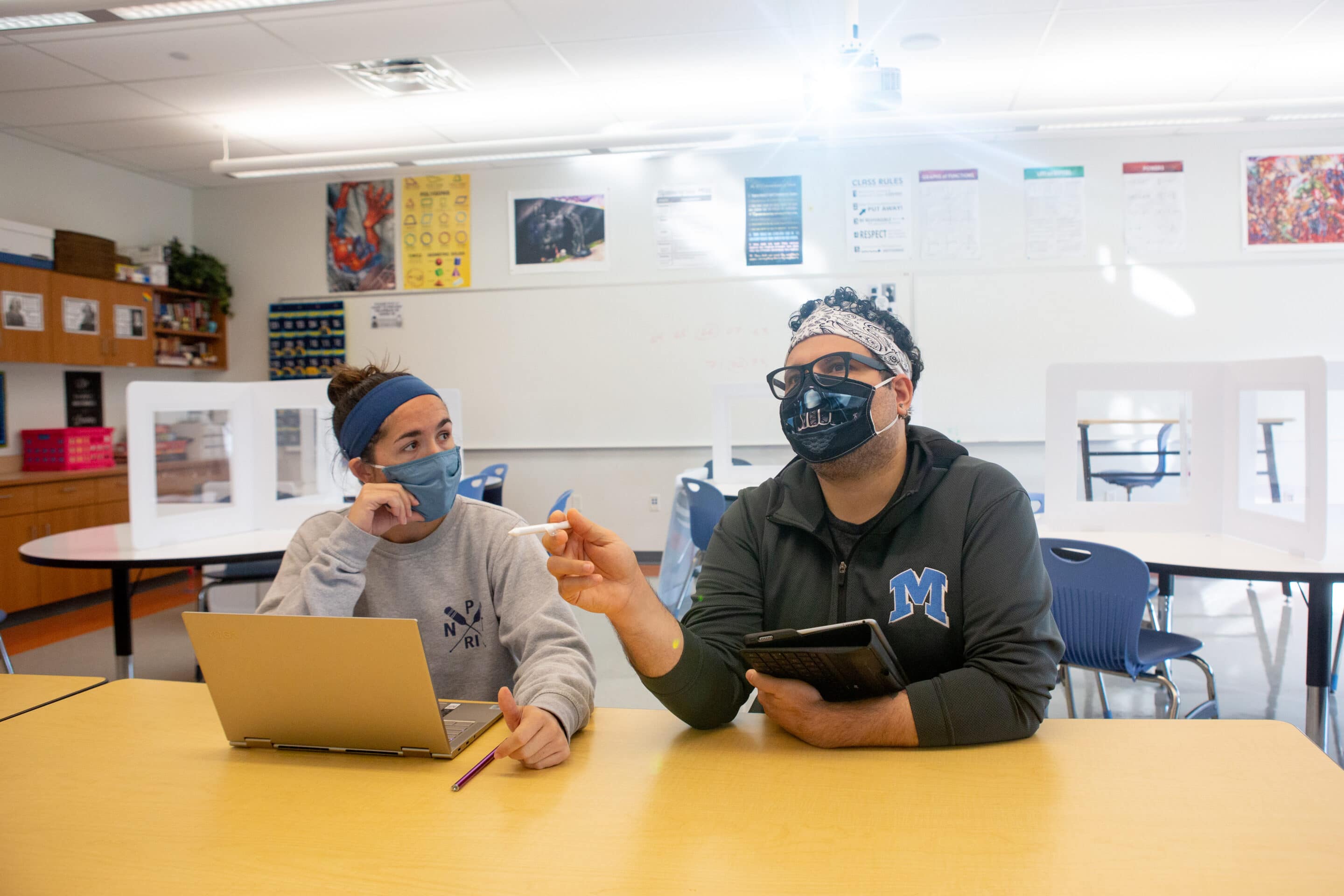This piece is from the Center on Reinventing Public Education, HTI’s evaluation partner.
The original blog can be found here.

Over the past fifty years, K–12 education in the U.S. has increasingly focused on one narrow goal: preparing students for college. Vocational programs and career-oriented courses, once common options for students, were largely phased out, and those that remained were seen as a lesser option for students who couldn’t “make it” on the academic track.
Fortunately, times are changing. Even before the COVID-19 pandemic, states and districts were starting to expand career and technical education (CTE) initiatives for K–12 students. Now, continued declines in college enrollment, combined with an influx of stimulus funds directed at economic revitalization, have created renewed urgency and fresh opportunities for change.
Although the moment for career-relevant learning may be upon us, it has not come with an instruction manual for how to change schools and districts. If new career pathways for students are to be successful, they must include strategies for overcoming hard-wired habits, schedules, outcome metrics, and course offerings all focused on college prep.
Yet some districts are learning how they can overcome these barriers even while dealing with the stresses and disruptions of the pandemic.
For the past two years, CRPE has been documenting lessons from eight communities participating in the Homegrown Talent Initiative (HTI), a grant-funded program run by nonprofit organizations Colorado Succeeds and Colorado Education Initiative. The initiative has helped these rural districts create career-relevant learning experiences aligned to the needs and aspirations of their local economies.
Participating districts have redefined student graduation requirements, designed new courses, integrated career exploration into existing classes, and created new learning opportunities via internships with local industry and dual enrollment in local higher education institutions. Their experience teaches five lessons.
1. Communicate career preparation as being important for all kids
For many of these districts, career preparation was framed as fundamental for all students’ futures, including those aspiring to attend college. HTI district leaders saw it as essential that students better understand their local economy and how to build a career.
One superintendent explained that the initiative helped move them to this “career-prep-for-all” perspective, commenting that, “HTI was a program for some kids when we started and it was a select few that we thought we could reach … We shifted that philosophy: every kid should be an HTI kid and every kid should have this opportunity.”
Though many leaders adopted this broad approach, getting board members, parents, and other stakeholders on board was more challenging. One superintendent said they had to be wary of using the term “CTE” when describing the initiative: “There is a potential for going off track if this whole thing gets labeled as CTE … It is a kind of bifurcated system… and the college prep kids don’t do CTE, because ‘that’s like for losers and CTE is about the people that aren’t smart enough to go to college’… It’s just the wrong model.”
2. Challenge policies that stand in the way of student opportunity
HTI districts revised long-standing policies, ranging from graduation requirements to weekly schedules, in order to give students more opportunities and incentives to take part in internships, ‘capstone’ projects based on their work experience, and concurrent enrollment in community college.
Making such changes was not easy—but in Colorado this process was at least possible, thanks to recent state legislation that provides districts with increased flexibility and resources for students to explore a range of postsecondary trajectories. HTI districts received considerable support from the initiative’s coaches in order to take advantage of new policy options, as well as other state-level grants and waivers. As a result, some HTI districts are now advocating for further changes to state policy as well as ways to invest federal stimulus funds to support career-relevant learning.
3. Build a coalition of support by letting stakeholders lead
Although modifying seat-time requirements and establishing new career-oriented standards were critical steps, in order for these changes to outlast current leadership, HTI districts felt the initiative had to be shaped and owned by teachers, students, board members, and community leaders.
Some districts took pains to have students and teachers take ownership over new courses, internships, and capstone projects. One school leader asked a group of teachers who had resisted the move to career-relevant graduation projects to design their school’s new capstone course. The resistance faded, and the teachers even became proponents, saying that their students’ projects had “teeth” and truly demonstrated their readiness to graduate.
Districts also found it critical to redefine relationships with their local communities and with other districts. They needed to engage industry, higher education, and community leaders in the deep work of redefining the attributes of a high school graduate around twenty-first-century skills and knowledge. Districts spent their first year of the project developing community-specific graduate profiles.
By building a shared vision of graduate success, leaders found that their communities became committed to making significant change and were motivated to move toward implementation, even as the pandemic shut down schools in spring 2020.
Districts worked closely with both community and four-year colleges to develop dual-credit programs. They also curated internships and mentorship programs in partnership with local industry experts.
Seeing how districts could help address the needs of the local industry while also making students’ education more relevant was a revelation for some leaders. One superintendent said, “[The initiative] really pushed our thinking: what if you re-imagined some of this work together … if you had business leaders and government folks at the table at the beginning? I don’t know that I saw that possibility before.”
One HTI program coordinator said that the biggest impact from the program has come from “meeting with Rotary and Alliance Club and those kinds of organizations, as well as municipalities,” which have helped her “keep a finger on the pulse of the bigger issues economically with our community.”
4. Learn from – and with – other districts
HTI leaders are also increasingly looking to each other for support—a useful development given that external funding for the program is slated to end mid-2022. Throughout the initiative, teams from all eight districts were given opportunities to meet, learn, and collaborate with each other. During the last year, HTI coordinators (a position which many districts created specifically for the program) have started to meet regularly, and a similar network for principals is also being planned. District leaders are also visiting one another to learn how the initiative is implemented in other communities.
Now, some HTI district leaders hope to mentor others outside of the program. As one said, “Let us who have spearheaded it take some of them under our wing and really foster this more region wide. Because I think there’s so many great things that have come out of it.”
5. Get innovative about long-term funding
HTI districts are planning for financial sustainability after grant funding ends, often by exploring creative ways to pay for new teaching positions and leveraging community support for new programs and facilities.
One district is looking at using industry certificate funding to support the role of the HTI coordinator, while another has opted to forgo the creation of such a role in lieu of distributing control of the program among existing staff. Three of the eight districts passed bonds related to HTI’s work, including one for $9 million to support the creation of an innovation center focused on career and technical education.
Creating sustainable change in public education is undeniably challenging. However, thanks to the funding, high-touch support, and coaching provided by Colorado Succeeds and Colorado Education Initiative, these eight districts have made career preparation a reality for many more high school students. Though nothing is guaranteed, these districts appear to be gaining—not losing—momentum. They offer an example that others can follow.
